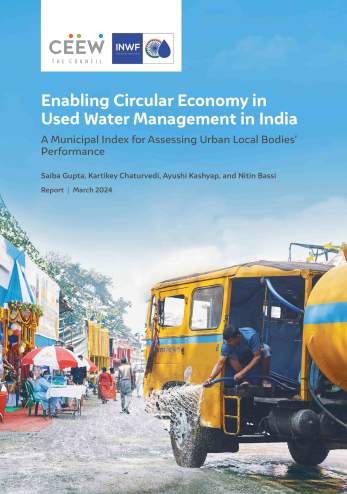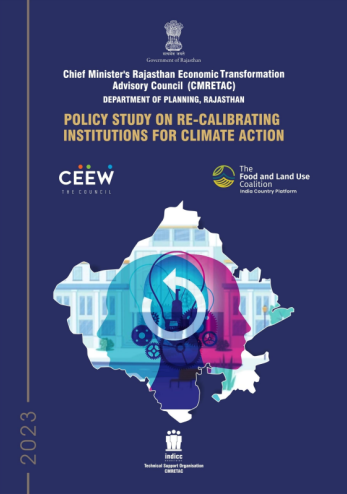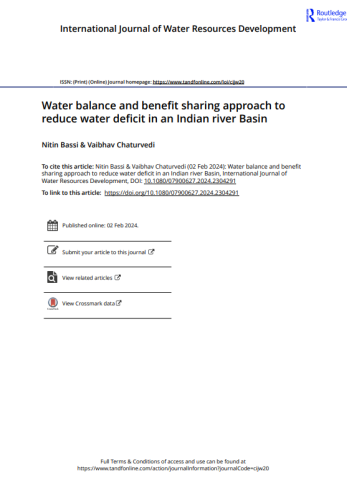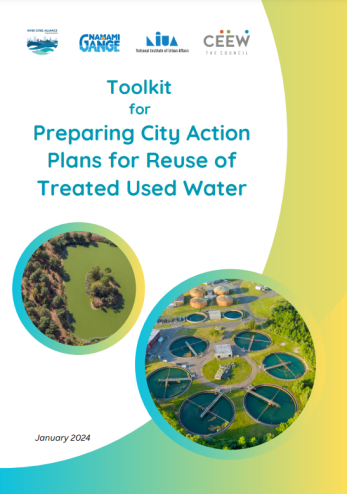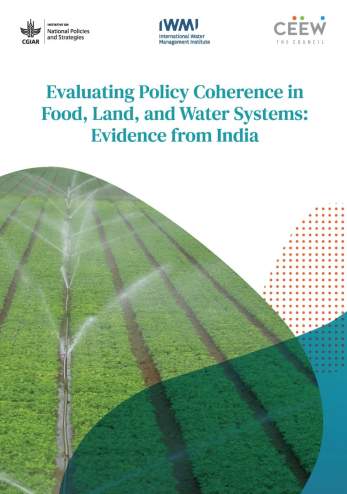Report
2030 Water Resources Group National Water Platform
Preliminary investigation of the possible roles, functions and potential governance
Nirmalya, Choudhury, Rudresh Sugam, Arunabha Ghosh
August 2013 | Sustainable Water
Suggested Citation: Choudhury, Nirmalya, Rudresh Sugam, and Arunabha Ghosh. 2013. 2030 Water Resources Group National Water Platform: Preliminary Investigation of the Possible Roles, Functions and Potential Governance. New Delhi. Council on Energy Environment and Water and Water Resources Group.
Overview
This report, in collaboration with 2030 Water Resources Group, is an initial strategy note to explore the possibilities for setting up the Indian water platform and the further due processes for its establishment. It elucidates how water decisions are structured in India and the ensuing gap, and analyses India’s existing water networks. Further, the report details the possible governance structure of India’s water platform.
Key Highlights
- The bulk of the water networks in India focuses on drinking water and sanitation issues.
- Within agriculture water use, the primary focus is on water harvesting, and within domestic water use, the major focus is on access to drinking water and sanitation services.
- In terms of operational focus, 62 per cent are issue-based water networks while 38 per cent are generic water networks.
- Off-grid renewable energy storage is primarily used for solar power-based home systems in rural areas, lighting and charging solutions or roof-top solar applications in urban areas.
Operational focus and objective of the networks
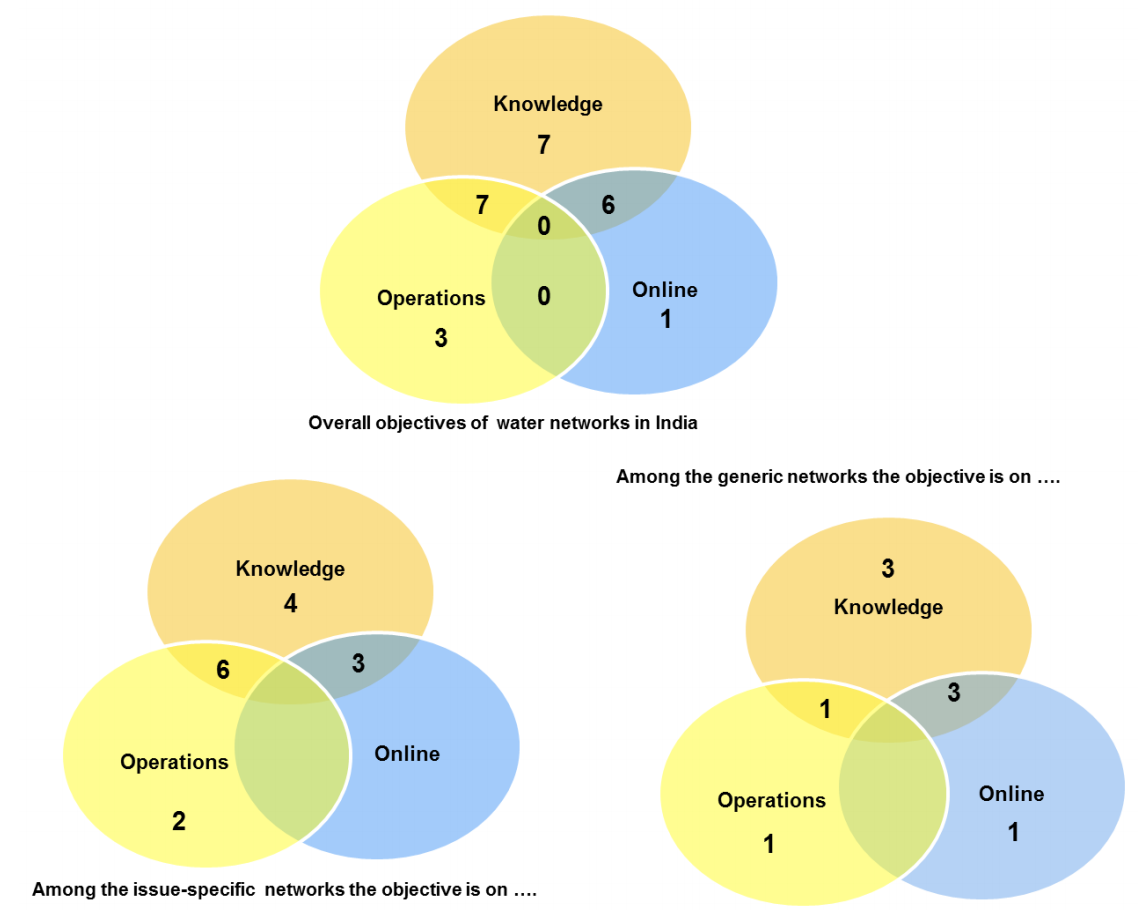
- A bulk of the water networks identifies knowledge generation and circulation as the major objective.
- Private Sector’s participation in the water networks is low and mostly, the networks are governed by civil society and academia.
- Thirteen networks have agricultural water use as one of the focus areas and 16 networks list domestic water use as one of their focus areas.
- Wastewater treatment in the urban locality is a significant issue and treated wastewater could be reused for industries or agriculture. Through this, the India Water Programme (IWP) could simultaneously intervene in all the three sectors (domestic, industrial and agricultural).
- The domestic and industrial sectors are more informed and achieving targets (to install IWP) would be quicker and easier.
- New cities/towns are coming up and it is important to plan the urban water use properly. However, agriculture and industrial water use are equally important.
- The India Water Platform's governance model would have to be simple yet flexible enough to ensure that it is inclusive, transparent, accountable and member-driven.
The governance structure of 2030 WRG India Water Platform
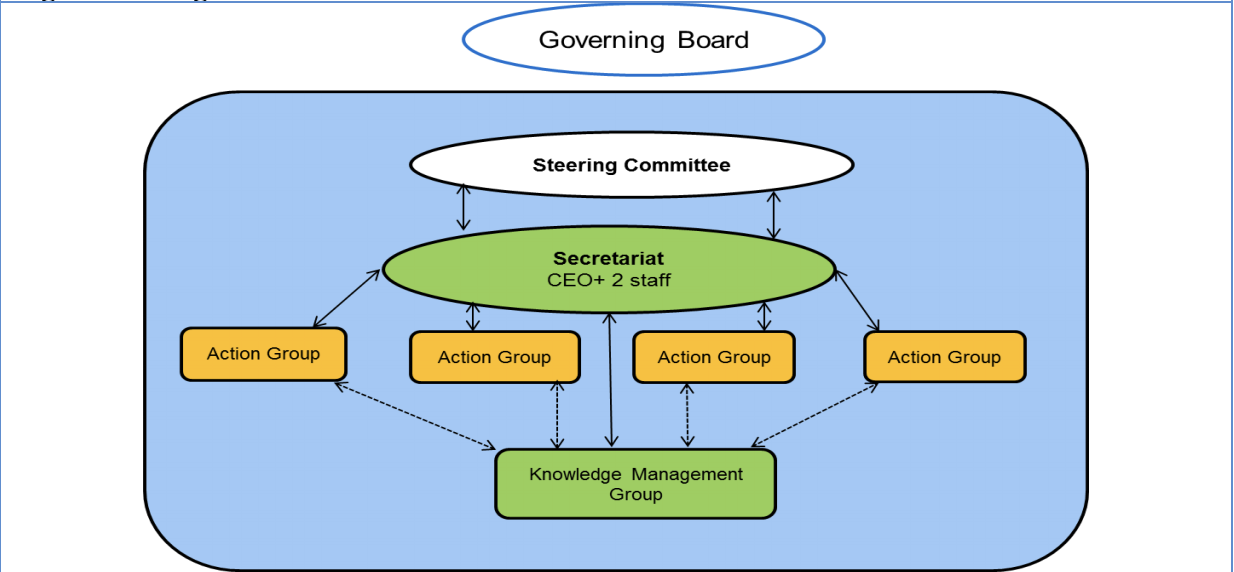
Key Recommendations
Indian Water Platform (IWP) should focus on:
- Collective action on enhancing industrial water use efficiency from extraction to disposal through innovative technological and financial interventions.
- Enhancing agriculture water efficiency within a river basin through innovative technology, finance, and institutional interventions.
- Engaging with Urban Local Bodies in the neighbouring areas of selected industrial clusters on possibilities for different institutional, technological and contractual arrangements to increase the reliability of the urban water supply.
- Commissioning studies on hydro-economic modelling. Also, focus on tracing out the different technological and institutional options available and their cost-water saving potential for various sectors/river basins.
- Creating multi-stakeholder representation at various levels of governance within the platform, within the steering group, and different action groups.
- Establishing clear responsibility across project partners within action groups. This could be a challenge that the steering committee of the IWP has to address.
The 2030 WRG IWP should have multi-stakeholder representation at various levels of governance within the platform, within the steering group, and within various action groups.




